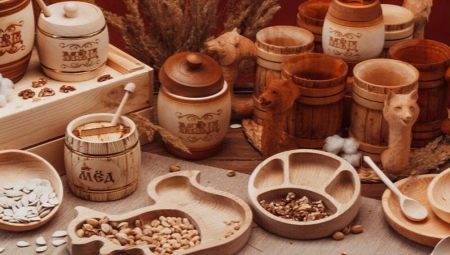Wood is one of the first materials that man has mastered. It is easy to process, versatile and looks beautiful, so it is not surprising that the first dishes were made from it.
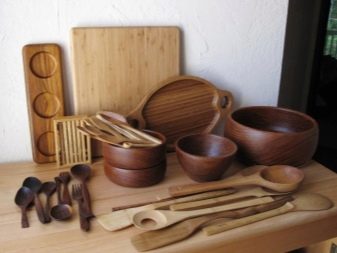
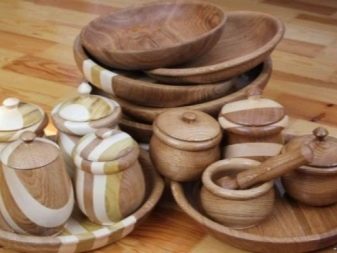
A bit of history
Most of kitchen utensils and not only were made of wood in Ancient Russia. As archaeological finds have shown, already in the VIII century, wooden dishes were a great success. The most expensive pieces had decorative carvings on the outside.
Hardwood was used as the basis, since this material has the necessary properties. There were several manufacturing methods. The utensil was presented in several forms:
- chiseled;
- hollowed;
- cut;
- cooper;
- from rivets;
- collected by hoops.
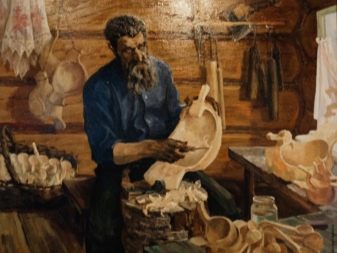

Turned dishes became more widespread; these were not only mugs, but also plates, spoons, mortars, and much more. The household used wooden basins, tubs. Artisans kept their secrets and passed them on from generation to generation.
There is another advantage of wooden utensils - it was available to everyone, regardless of position.
Spoons were presented in a wide variety, they differed in shape, since one was used for salad, the other for soup, and the third separately for mustard or dessert.
Today, this type of cookware is no longer very popular and is more a decorative item in the kitchen. However, sugar bowls, bread bins, pushers for mashed potatoes and cutting boards are irreplaceable devices of modern housewives.

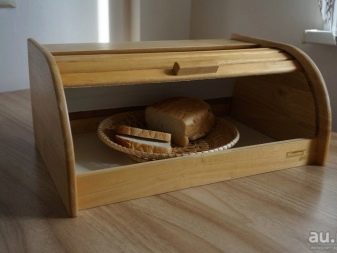
Advantages and disadvantages
Long before the first silver fork was invented, people feasted on primitive wooden cutlery. The durability of silver tablespoons and forks, as well as the easy disposal of plastic appliances, eventually pushed the wooden products aside.
However, now, in the era of energy efficiency and energy saving, wooden cutlery is back in use, although they are not as durable and hygienic as metal counterparts, wooden utensils are valued for its safety.
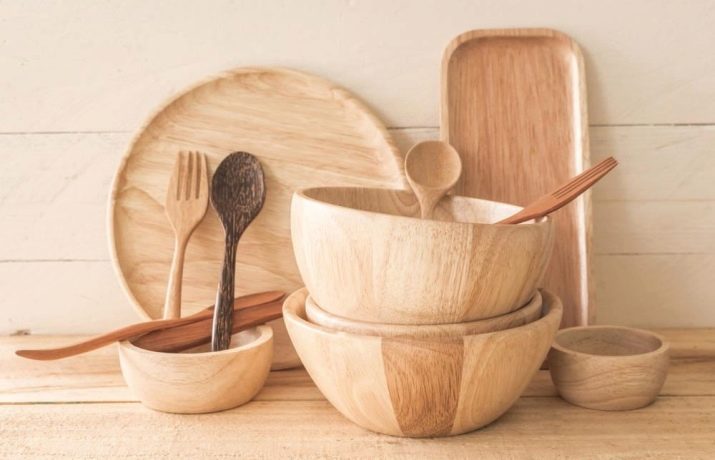
Among the advantages, several factors can be distinguished.
- Wood is a natural material.
- Timber is a renewable resource. For example, bamboo products are very environmentally friendly, however, the plant itself quickly fills the felled area.
- Compared to oil, non-degradable plastic devices that overwhelm world landfills, wooden ones are safe for humans.
- Such products can be made from any type of hardwood, including birch and maple.
- Recycling wooden cutlery helps solve the growing problem of recycling plastics and other non-degradable and hazardous materials that are already found in large quantities in the soil.
- Wood cutlery can be very beautiful and expensive if painted.
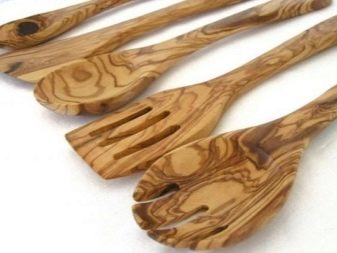
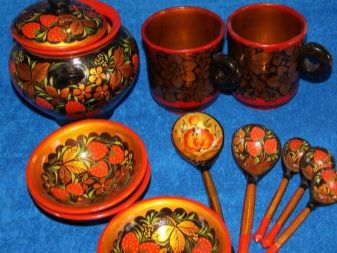
Despite so many advantages, wood products also have their drawbacks.
- The wood is absorbent, a porous material that absorbs moisture, so it is a great place for bacteria to grow. For this reason, wooden cutlery is unhygienic and unsuitable for prolonged use.
- Utensils made from certain types of wood, such as cedar or cypress, can spoil the taste of food with their strong smell and resin.
- Wooden cutlery made from by-products, imported or processed wood, may be exposed to chemicals during the manufacturing process.
- Most of these cutlery are carefully sanded for safe use. When the material dries, cracks can form on its surface, respectively, small chips appear that stick into the oral cavity.
- Such products are short-lived, and if used and stored improperly, they can last only a few months.
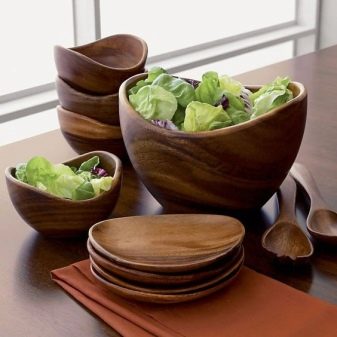
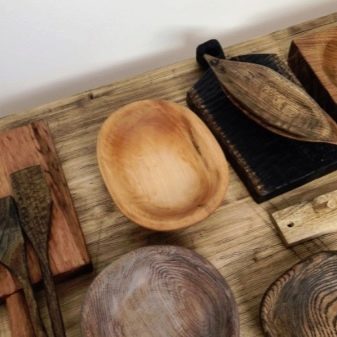
Varieties
A painted set of kitchen utensils made of wood with Khokhloma painting on both sides is a real work of art. Such a product can play an exclusively decorative role and not be used. You can’t imagine the best complement for organizing an unusual kitchen interior, since such utensils add color.
In search of something unusual in the market, you can see wooden products in a wide variety. Here are the dishes of the following manufacturers:
- Russian;
- Finnish
- Chinese
- Japanese
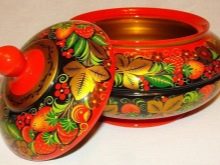


Each presented species has its own characteristics. For example, Japanese is ideal for sushi. It is fundamentally different from the Finnish and Russian form, design, cut.
Sometimes plates and spoons are made from olive wood, more often from other hardwoods. The cost of such products depends on the quality of wood. Carved, on which there is a painting, is not cheap and is suitable exclusively as a gift set. The more complicated the carving, the more expensive such a gift is. Antique dishes are sold on certain platforms.
You can find honey products and even disposable plates and spoons on the market, but they are practically not popular.
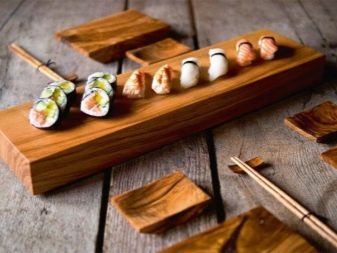

Separately, it is necessary to mention the types of wooden utensils that were used in Russia. It is difficult to list everything, but you can focus on those that are most often used on the farm.
- Tub. This capacity was necessary for storing wine and honey, sometimes water was transferred in it, it was allowed to get drunk. The main production material was trunks of trees such as birch and aspen.The tub had a cylindrical shape, on top of it there were small “ears”, whence the name came from.
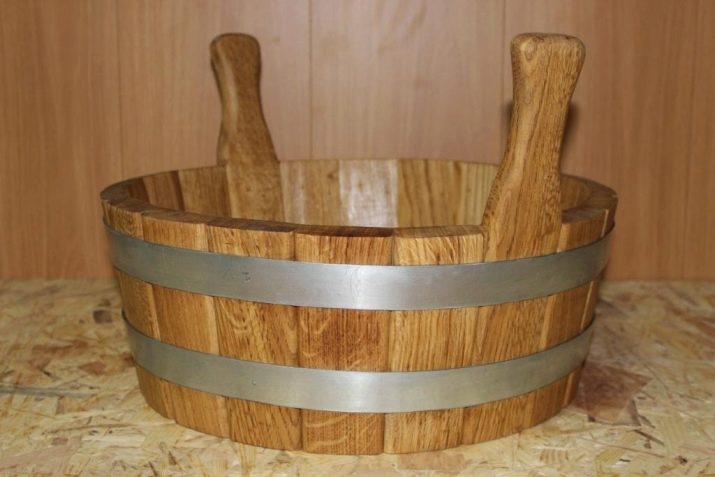
- Stavets. A kind of plate with a lid and a flat bottom. It was used not for serving dishes, but for storing bread and other kitchen utensils.
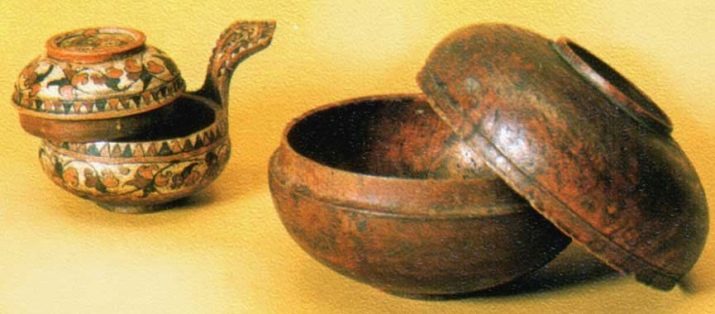
- Brother Such a jug could often be found on the table, as it was served to guests along with a drink. Around him were always mugs and plates of appetizers.
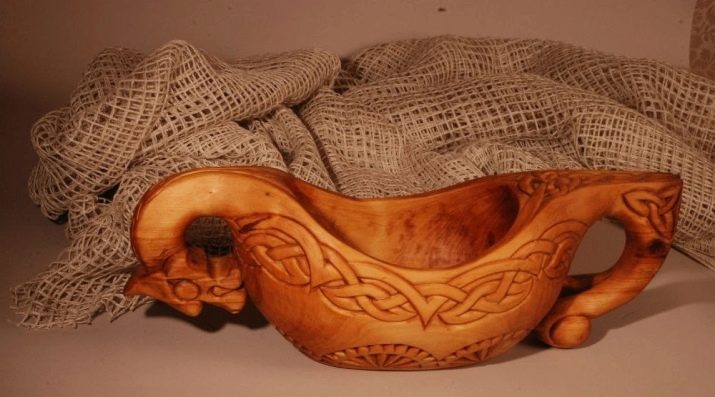
- Spoons. Our usual products were very different from those that were made at the very beginning. After archaeological excavations in the Urals, specimens of a very unusual shape were found. Antique dishes were distinguished by decorative beauty, carved in the shape of birds and animals. Historians call many types of spoons, which differed in form among themselves, were fishing, mezhumki, half-baskas and rubbing.
It was proved that the production of wooden utensils even then represented a whole industrial process. In one village they were engaged in harvesting, in another - tucking, in the third - grinding.
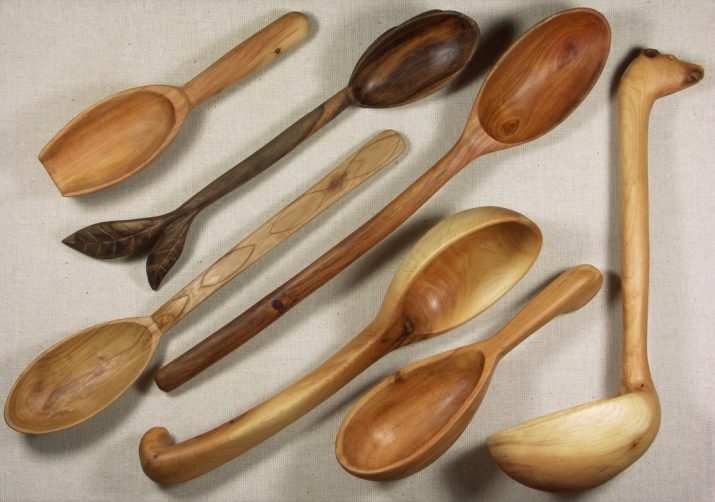
- Buckets There were also several types of them. The name was taken from the place where the item was made. For example, Moscow and Tver ladles were popular, there were also Kostroma, Volgograd and others. Most often it was possible to meet ladles on a festive table as food was served in them. Moscow products were different from all other materials, since they were made from burl. From the side, such dishes very much resembled a rook with a flat bottom and a pointed nose. Strength of such a product could only be envied, the wall thickness reached 0.8 cm. Tver ladles, which were made of root, differed from Moscow. Such utensils were low, long and had a decoration at the end in the form of a horse's head. Masters did not skimp on the design of the thread.
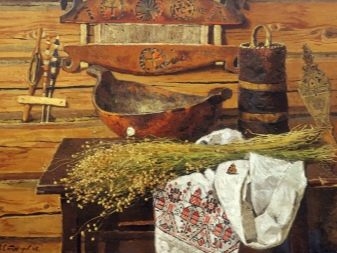
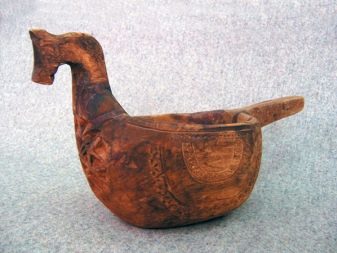
- Plates. They are also presented in a wide variety. They were deep and shallow, large and small. When the princes decided that serving food to them on the table in the dishes with which the common people also eat was disrespectful, silver and gold items replaced wooden utensils.
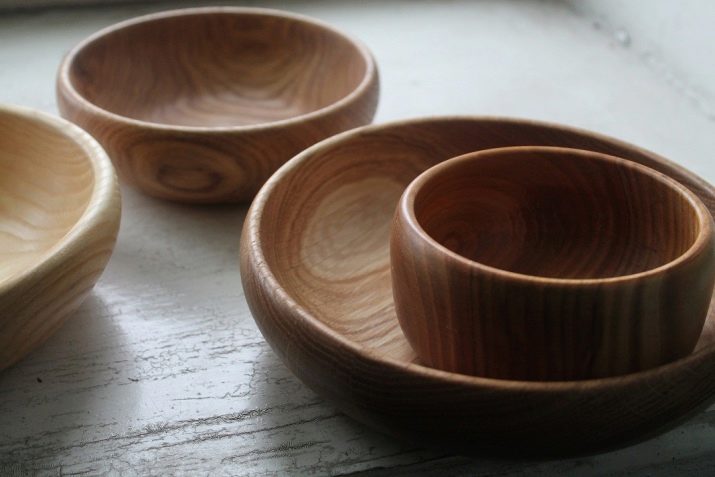
How to choose?
When choosing a quality product, you should rely on the advice of professionals, since there are many models on the shelves in stores, and not all of them meet the requirements of safety and durability.
- If you buy such an item for the kitchen, it is better if it is made in our country. These products are tested for quality and environmental safety.
- Be sure to carefully inspect the dishes so that the impregnation is applied evenly. If the model is varnished, then it is not suitable for use during cooking.
- Any kind of deformation should be absent on the surface, since when the moisture gets there, the tree will crack.
- The best dishes are those made from juniper and alder, and cedar and aspen are also suitable.
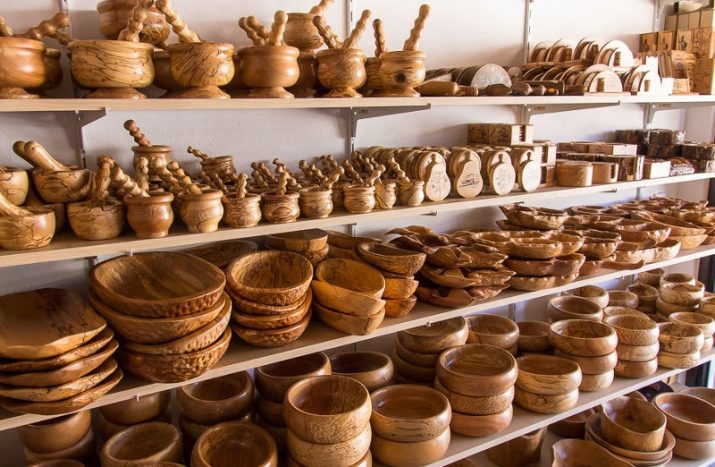
Terms of use
Often, wooden products are purchased for restaurants, as they are suitable for serving unusually decorated tables. For such dishes to serve for a long time, you need to know and follow the rules for its use.
You can put wooden dishes in the microwave, most importantly, do not cook in them, but just warm the food. Since the material absorbs moisture and is able to expand or dry over time, such utensils lose their attractiveness over the years.
For this reason, such products should be impregnated with a special oil solution that closes the pores and prevents the penetration of moisture inside.
It is strictly forbidden to wash such dishes in the dishwasher, as this will lead to the appearance of a rough surface.
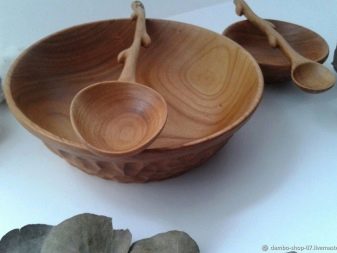

Care Features
If wooden products are properly looked after, then they will last a long time.
- The unpleasant odor that the tree absorbs is eliminated simply. To do this, wipe the spoons and plates once a month with gauze or vinegar soaked in alcohol.
- Tannins in wood are easily eliminated by soaking the dishes in plain water for several hours.
- You can smooth the surface of the cutting board with a simple sandpaper.
- Wiping with a decoction of onion peel or hydrogen peroxide allows you to increase the service life of wooden utensils.
- After using the plate, the spoons must be rinsed immediately and wiped dry.
- Such utensils are stored in a well-ventilated cabinet where there is no increased humidity.
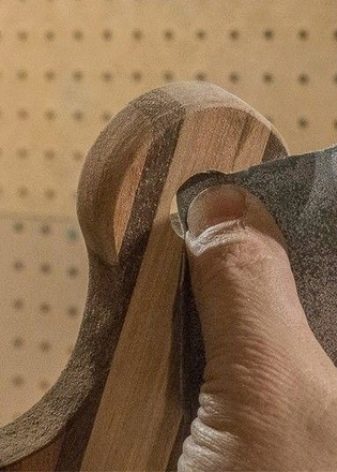

See how to make a plate of pine in the next video.
